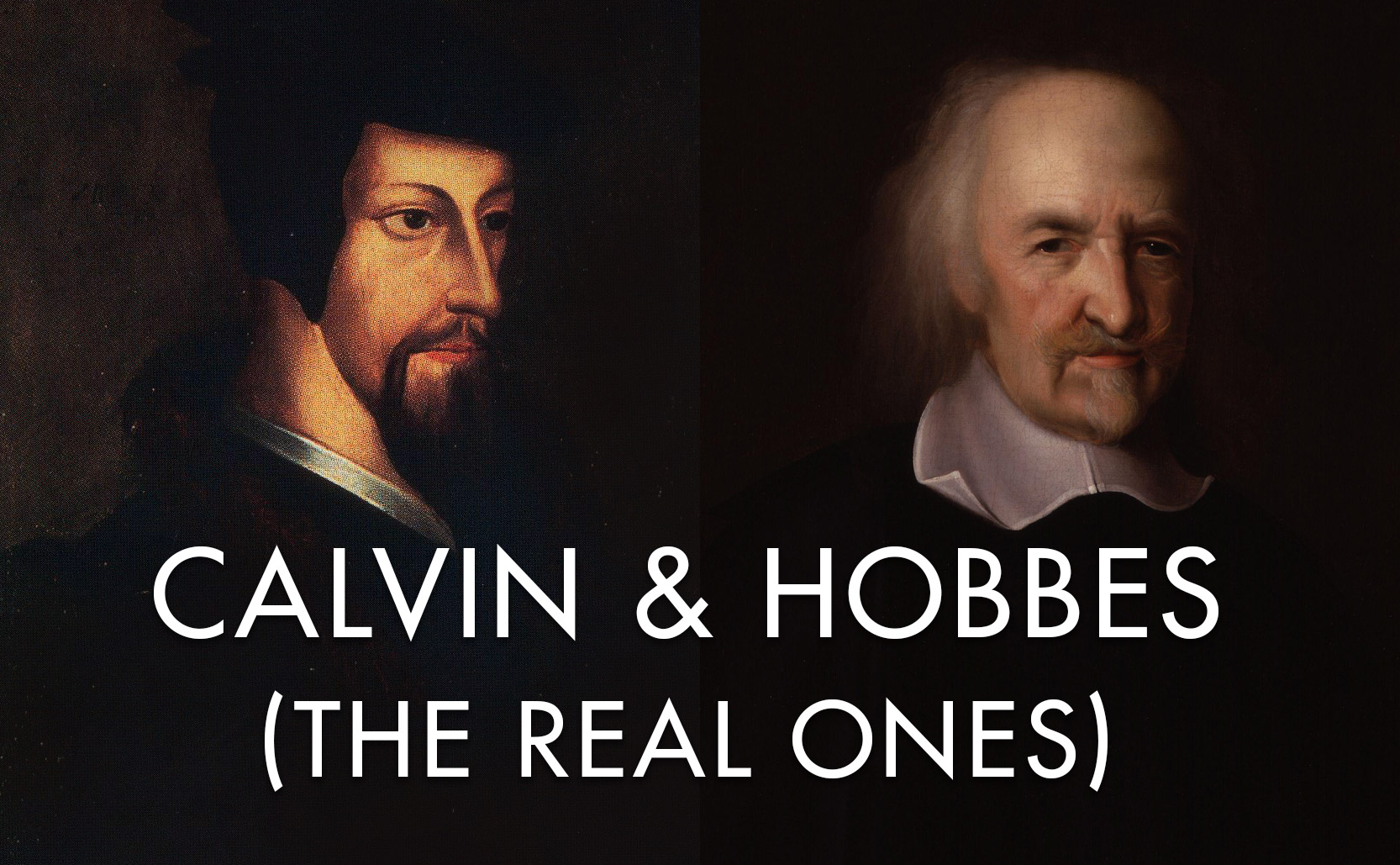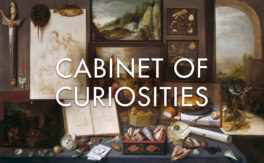The characters of Calvin and Hobbes are named after a theologian and a philosopher.
The comic strip Calvin and Hobbes features a six year old boy named Calvin and his sometimes anthropomorphic stuffed tiger Hobbes. The two are named after 16th century protestant theologian John Calvin and 17th century political philosopher Thomas Hobbes. The characters of Calvin and Hobbes are decidedly a lot more fun than their namesakes.
John Calvin
Born in France in 1509, John Calvin trained to be a lawyer but moved to Geneva, Switzerland and became a major figure in the protestant reformation that was spreading across Europe at the time. Unlike Martin Luther, who looked to work with Catholic doctrine but make some changes, Calvin threw it all out and started from scratch creating an entirely new school of Christian thought. Among other things his new theology taught that we can’t know anything about God except what God chooses to reveal to us, that because of Original Sin we are driven to sin unless God steps in to help us, that you only partially have free will because God has predetermined your fate to end up in Heaven or Hell so you’re going to end up doing what it takes to merit the one you are destined for, and that there is nothing you can do about any of this.
The Catholic Church used to name heretical movements after the founder (such as Lutheranism). Similarly, this is how Calvinism was born. Calvin’s ideas for reformation became influential with a host of protestant groups including the Presbyterians, the Puritans, and the Huguenots. Calvin also believed that “… the human heart is a perpetual idol factory”, and that religious art was a distraction. This is why Calvinist churches are so plain and without statues or other ornamentation. Until this time the Catholic Church had been a lucrative source of work for artists, but because of the reformation movement’s austere aesthetic, to earn a living artists were forced to either produce more secular art or move to other cities or countries where the reformation hadn’t taken hold as strongly. This simple aesthetic applied to Calvinist clothing as well (such as the simple styles and Sunday black clothes of the Puritans).
In politics Calvin believed in the separation of church and state, but he also believed that politicians & royalty were in positions of power because God willed it. As such authority figures should be submissively obeyed even when said figures are unworthy of such deference (except if they are leading you astray from God). Which is kind of like Thomas Hobbes …
Thomas Hobbes
Born in 1588, 24 years after Calvin’s death, Thomas Hobbes’s world view was strongly influenced by the destruction brought about by the English Civil War. From this he produced Leviathan, which is his 1651 treatise of social contract political theory. In short, he believed that, when left on our own and without government, humans are violent and selfish. He believed we need government to help us rise above our base instincts. Without a political community he said that the life would be “… solitary, poor, nasty, brutish, and short.” Similar to Calvin’s view that humans are compelled to selfishness & sin, Hobbes’s political philosophy was that without a government, the default “state of nature” for humans is chaotic and violent.
This is the basis for his argument that we not only need government but that we also must obey authority figures even when said figures leave a lot to be desired. In his mind, an abusive dictatorial government was still better than no government at all. There was almost no place for political revolution in Hobbes’s version of the social contract.
It’s worth noting that the foundation for Hobbes’s argument, the belief that without government “uncivilized” humans would engage in constant bickering & violence and would always be looking over their shoulder for attacks from others, isn’t necessarily true. The philosophical novel Ishmael by Daniel Quinn partially explores this assumption and how the competition for greater wealth is what incites violence. Many early tribal groups living within their means were able to live in relative stability. It has also been argued that, as humans became more sedentary in civilizations, warfare increased because humans couldn’t move away from one another to avoid conflict.
Even keeping to 17th century social contract philosophy there are arguments against Hobbes’s ideas. John Locke also believed in the benefits of having a strong government, but he believed that if that government was jeopardizing your natural rights to “life, liberty, and property” you had the right of revolution to overthrow the government. Thomas Jefferson later copy & pasted Locke’s ideas for the Declaration of Independence.
Calvin & Hobbes
Ultimately both Calvin and Hobbes had fairly dim views of humanity. They believed that without an authority figure (be it God or be it a political leader) humans were by default mean and unable to make better lives for themselves. Fortunately the fictional Calvin and Hobbes are a lot more positive than their namesakes.






